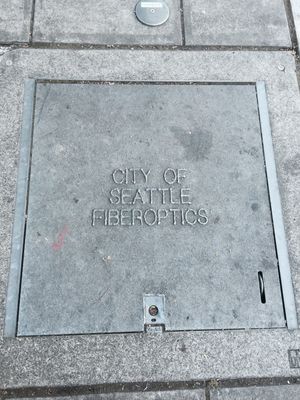
Seattle has a lost connection
on gigabit broadband idea
The City of Seattle decided it was fiscally prudent not to build its own broadband network. In that case, it shouldn’t waste money on showcase projects that would only serve a few residents.
Clues about what could be next are revealed in the broadband feasibility study the city released earlier this month.
The $180,000 study concluded that a city network might break even eventually, but it’s risky.
Costs projections gave City Hall an excuse to say no. The sound bite is that an ultrafast, 1-gigabit per second network would cost $480 million to $665 million. It would need 40 percent of the city’s residents to subscribe and pay $75 per month.
Residents appear willing to pay that much, or close to it. The study estimates 47 percent are willing to pay $75 for gigabit service. If the price dropped to $65, 73 percent would be willing.

It’s too strong to say the report was skewed, but it was very cautious.
I think the city nudged the outcome by excluding revenue from TV and voice services — “triple play” and “double play” options that are usually bundled with broadband.
Michael Mattmiller, the city’s chief technology officer, said people are moving away from pay TV to online video. The city didn’t want to rely on revenue that may fade.
Even so, the majority still pays Comcast for TV. If the city seriously plans to compete, it would have similar offerings. At a minimum, the city could sell online-TV services. Ad sales and a commitment by Seattle City Light to use city broadband to connect “smart meters” could also have helped it pencil out.
The feasibility study discloses this possibility. The city told consultants preparing the study that it’s interested in spending perhaps $5 million over two years on a pilot project. One option is to serve around 500 customers on the crest of Queen Anne. Other options include reaching around 1,300 homes in either north Beacon Hill or the Central District.
I say don’t bother with this costly branding exercise. A pilot would exacerbate the “gigabit divide” by using tax dollars to connect fewer than 1 percent of homes. The lucky few would depend on connections that might be cut when the pilot ends. That’s what happened to free Wi-Fi the city offered for a while in Columbia City — a pilot project done two mayors ago before the previous broadband plan was shelved.
Seattle should also run from the consultants’ suggestion that it create an “application demonstration center” for residents and software developers to experience the glories of gigabit service. Comcast and CenturyLink don’t need taxpayers to pay for their promotion.
Gigabit service has been available for years and is steadily expanding.
Here’s an idea: If the city still wants to showcase its fiber-optic infrastructure, provide gigabit service to public computers at libraries. Then use the rest of the $5 million to provide gigabit service to schools and community centers.
Another good move for Seattle — and any other city hoping for better broadband — would be to map and report broadband speeds and prices everywhere within its borders. Mattmiller has a good plan to do this with crowdsourcing, but the city should go further and require broadband providers using its right of way to publicly disclose this data.
If fiscal prudence is why the city opted not to build a network, fine. But then look for low-cost ways to improve broadband for everyone while laying groundwork for another run at a city network in the future.



